When encountering an automotive emergency at night, having a reliable flashlight specifically designed for such situations is crucial. These flashlights must be compact, durable, and bright, providing ample luminosity to illuminate your surroundings and signal for help to oncoming traffic. The ideal flashlight should have a high-lumen output, be one-handed operable, offer both focused and diffused light options, and include various modes, including SOS signals and red lenses. It should also feature extended battery life or rechargeable capabilities to ensure visibility in all weather conditions. Keeping your flashlight well-maintained, stored in a cool, dry place, and performing regular inspections on the batteries will ensure it's ready for use when needed. In an emergency, direct the light away from your eyes, avoid shining it at oncoming traffic, and be mindful of its placement to prevent fire risks. Knowing how to effectively use these flashlights can significantly aid in safety, navigation, identifying hazards, and signaling for rescue, making flashlights for automotive emergencies an indispensable tool for drivers during late-night travel. Properly using such a flashlight not only enhances visibility but also minimizes additional complications, providing peace of mind until professional assistance arrives.
When night falls during a drive, safety becomes paramount. An unexpected breakdown or navigating a dark road requires reliable illumination. This article delves into the critical role flashlights for automotive emergencies play in such situations. It guides readers on choosing the optimal flashlight for late-night travels, ensuring safe usage to avoid disorientation or injury, and maintaining these tools for peak performance. Furthermore, it outlines best practices for using a flashlight during breakdowns and elucidates how this simple tool can enhance rescue visibility and effectiveness. Understanding and applying these strategies can make the difference between a minor inconvenience and a major crisis when darkness unexpectedly descends.
- The Role of Flashlights in Automotive Emergencies
- Selecting the Right Flashlight for Late-Night Drives
- Safe Flashlight Use: Preventing Blindness and Disorientation
- Best Practices for Storing and Maintaining Your Automotive Flashlight
- Navigating Breakdowns Safely with a Flashlight
- Emergency Scenarios: When to Use Your Flashlight and How It Can Aid Rescue Efforts
The Role of Flashlights in Automotive Emergencies
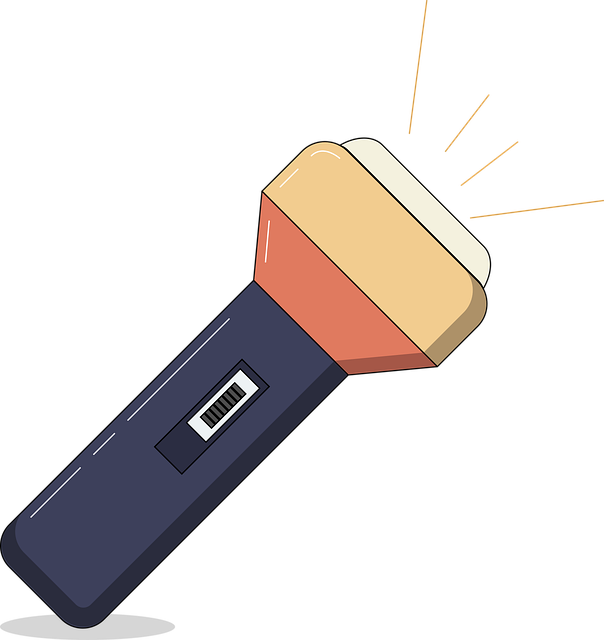
When automotive emergencies strike, particularly at night, a reliable flashlight for automotive emergencies becomes an indispensable tool. In situations where vehicle breakdowns occur, or when drivers find themselves stranded on dark roads, a flashlight not only illuminates the immediate area but also signals to passing motorists that help is needed. Flashlights for automotive emergencies should be compact, durable, and bright enough to overcome darkness effectively, ensuring that roadside assistance can locate you with ease. They must also be versatile enough to use with one hand, as drivers often have to juggle the task of maintaining visibility with other safety measures, such as reflective triangles or hazard lights. A high-quality flashlight with a long battery life can provide critical visibility not only for the driver but also for any passengers and for the rescue personnel who come to assist. It’s crucial that drivers keep a flashlight specifically designed for automotive emergencies within their vehicle, ensuring preparedness for unexpected nighttime incidents on the road.
Selecting the Right Flashlight for Late-Night Drives
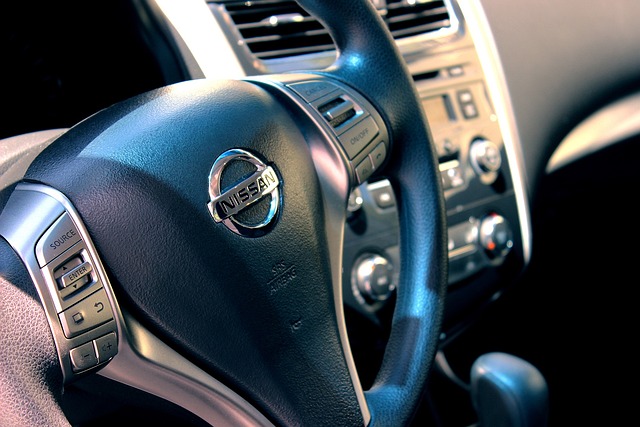
When embarking on late-night drives, having a reliable flashlight for automotive emergencies is not just a good idea; it’s an essential precaution. The right flashlight can illuminate your way during unexpected vehicle issues or when navigating through areas with poor lighting. Selecting the best flashlight involves considering several factors. Firstly, opt for a model that offers high lumens to cut through darkness effectively. A durable design, with a sturdy build and impact-resistant casing, is crucial for handling rough conditions. Additionally, water resistance ensures the flashlight functions in all weather scenarios.
For those who frequently traverse late-night roads, a flashlight with a long battery life or rechargeable capabilities is preferable. Flashlights for automotive emergencies should also feature a focused beam for distance visibility and a wider beam for close-up tasks. Consider models that include various light modes, such as SOS signals or red lenses, to avoid blinding oncoming traffic while maintaining versatility in emergency situations. Investing in a high-quality flashlight tailored for automotive emergencies can make the difference between safety and vulnerability during nighttime travel.
Safe Flashlight Use: Preventing Blindness and Disorientation
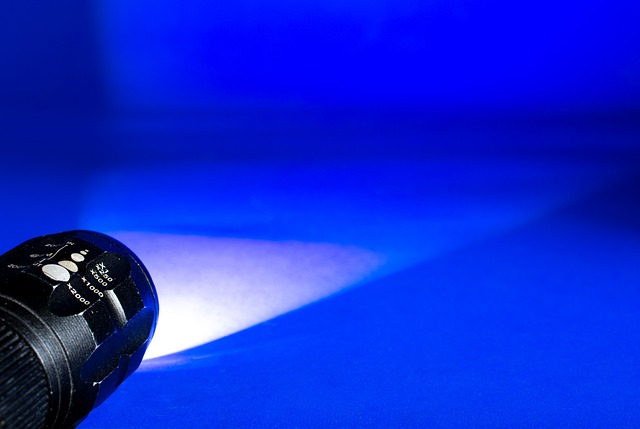
When navigating late-night roads or dealing with automotive emergencies, having a reliable flashlight is crucial. To ensure safety and avoid disorientation, it’s important to use flashlights for automotive emergencies correctly. The intensity of the light emitted can be disorienting and potentially cause temporary blindness if not directed properly. To prevent such issues, always aim the beam away from your face and eyes, using the peripheral areas of the light to illuminate your surroundings. This technique allows you to maintain visibility while keeping your own vision intact. Furthermore, when working in confined spaces or under the hood of a car, position the flashlight with its body against a stable surface, directing the light where it’s needed most. This setup creates a focused beam that can reveal even the smallest details without casting shadows that could obscure critical components. Remember to use a diffused lens if available, as it softens the light and mimics daylight, reducing strain on your eyes during prolonged use. By adopting these safe flashlight practices, you can effectively navigate automotive emergencies at night without risking blindness or disorientation, ensuring both personal safety and the ability to address the situation at hand with clarity and precision.
Best Practices for Storing and Maintaining Your Automotive Flashlight
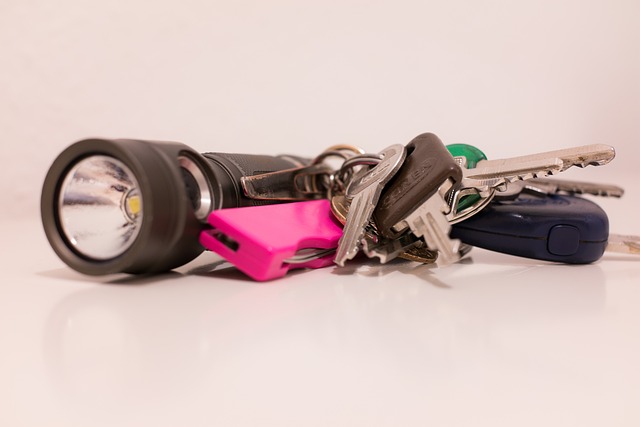
When preparing for automotive emergencies, having a reliable flashlight is a critical component of your safety kit. To ensure your flashlight functions when needed, adherence to best practices for storage and maintenance is paramount. Firstly, store your flashlight in a cool, dry place to prevent corrosion or damage to the battery and casing. It’s also wise to keep it in its original packaging or a protective case designed to shield against dust and moisture. Regularly inspect the flashlight for any signs of wear or tear, particularly on the battery contacts and bulb. Ensure that the battery is properly charged and replaced every two to three years, as battery performance can degrade over time. Keep spare batteries close by, ensuring they too are stored in a cool environment to maintain their charge.
For maintenance, familiarize yourself with the flashlight’s user manual to understand its specific needs. Periodically test the flashlight to confirm it operates at full capacity. Practice changing the battery to ensure you can do so quickly and correctly during an emergency. Additionally, clean the flashlight regularly, paying attention to removing any debris that may impede its operation. By following these storage and maintenance guidelines, your automotive emergency flashlight will be ready when unexpected situations arise, providing reliable illumination to guide your way through late-night drives safely.
Navigating Breakdowns Safely with a Flashlight
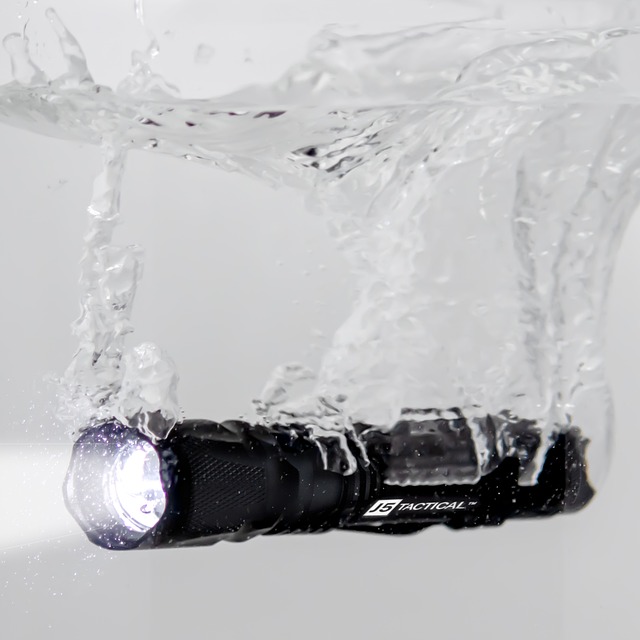
When encountering a breakdown late at night, safety is paramount. A flashlight for automotive emergencies can serve as an invaluable tool to navigate through the darkness and address mechanical issues. It’s crucial to choose a reliable model that offers a high-beam setting for illuminating dark areas effectively, ensuring you can clearly see potential hazards or components that need attention. When using the flashlight, always direct its beam away from your eyes and oncoming traffic to avoid disorientation or blinding other drivers. Place the flashlight at a safe distance from any fluids leaking from the vehicle to prevent fire risks. Additionally, keep the light moving rather than focusing it on a single area for too long to avoid overheating the device and to quickly scan the environment for additional dangers. In the event of a breakdown, having a quality flashlight specifically designed for automotive emergencies can enhance visibility, reduce the risk of further complications, and provide peace of mind as you wait for roadside assistance or attempt to make repairs. Always prioritize your safety by keeping the light under control and being aware of your surroundings. This preparedness not only ensures your well-being but also facilitates a more efficient resolution to your automotive predicament.
Emergency Scenarios: When to Use Your Flashlight and How It Can Aid Rescue Efforts

In the event of an automotive emergency occurring during late-night drives, having a reliable flashlight for automotive emergencies can be a lifesaver. It’s crucial to understand when and how to effectively use your flashlight to aid in rescue efforts. If you find yourself stranded on a dark road with vehicle trouble, or if you’re involved in an accident where visibility is compromised, a flashlight can provide the necessary illumination to assess the situation safely. It can help you locate hazards such as fuel leaks or broken glass, and it can also serve as a signaling tool to attract the attention of passing motorists or rescue personnel. For instance, directing the beam towards an area where help might be looking for you can expedite rescue operations. Additionally, in the unfortunate event of someone being injured, a flashlight’s light can be used to tend to their care by illuminating the injury site, thereby facilitating first aid measures until professional help arrives. The right flashlight for automotive emergencies should be durable, reliable, and preferably have a high-intensity focus for long-range visibility or a diffused beam for close-up tasks. It’s also wise to familiarize yourself with the flashlight’s functions, including how to activate any emergency features it may have, such as strobe settings, which can be used to signal for help. Keeping these points in mind ensures that when an emergency arises, you are prepared and can make the most of your flashlight’s capabilities to enhance your safety and the likelihood of a swift rescue.
When navigating the unpredictable nature of late-night drives, having a reliable flashlight for automotive emergencies is not just beneficial—it’s a critical safety measure. This article has outlined the importance of selecting the right flashlight, maintaining it properly, and understanding its role in various scenarios, from minor breakdowns to more serious incidents. By following the best practices for flashlight use, drivers can ensure their visibility without risking blindness or disorientation. A well-prepared flashlight, stored thoughtfully within your vehicle, can be a valuable asset in alerting others to your location and facilitating rescue efforts. Remember to always prioritize safety on the road, and consider flashlights for automotive emergencies as an indispensable part of your travel preparedness kit.
